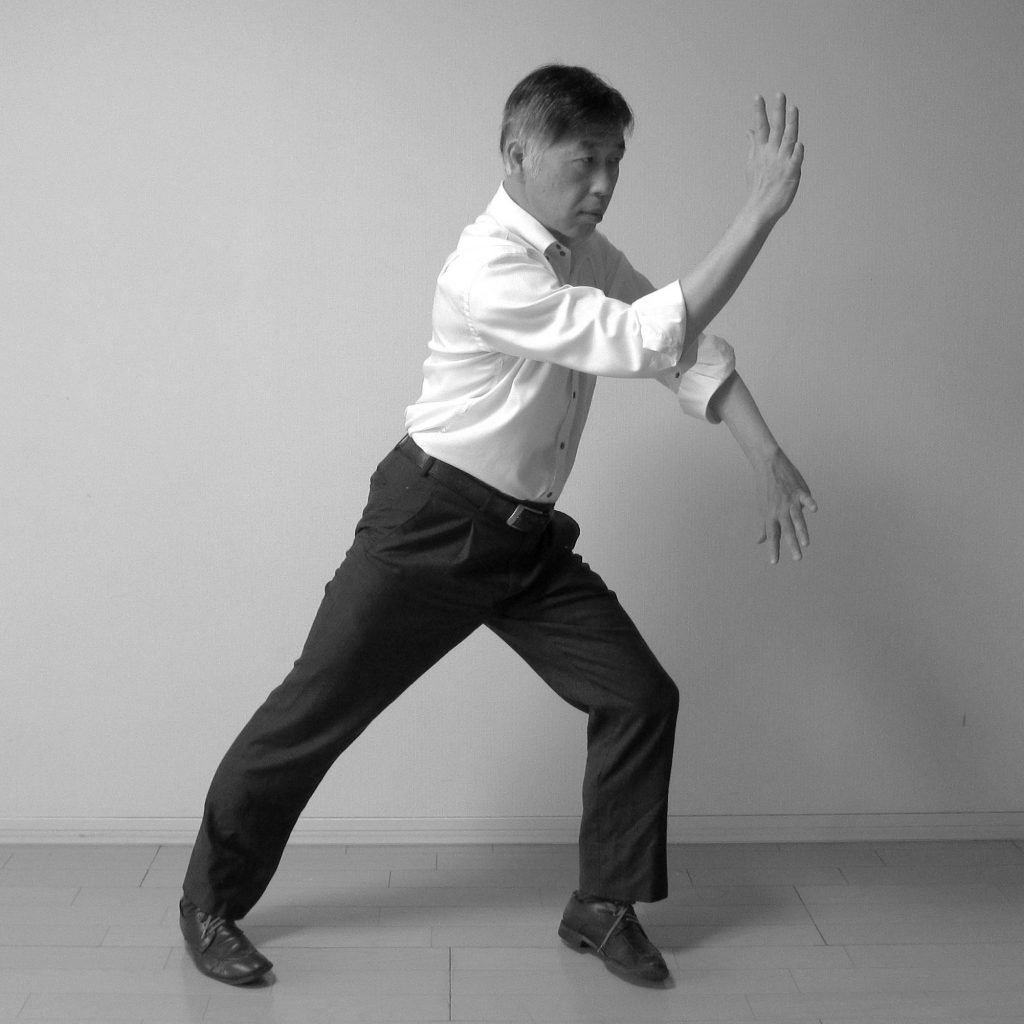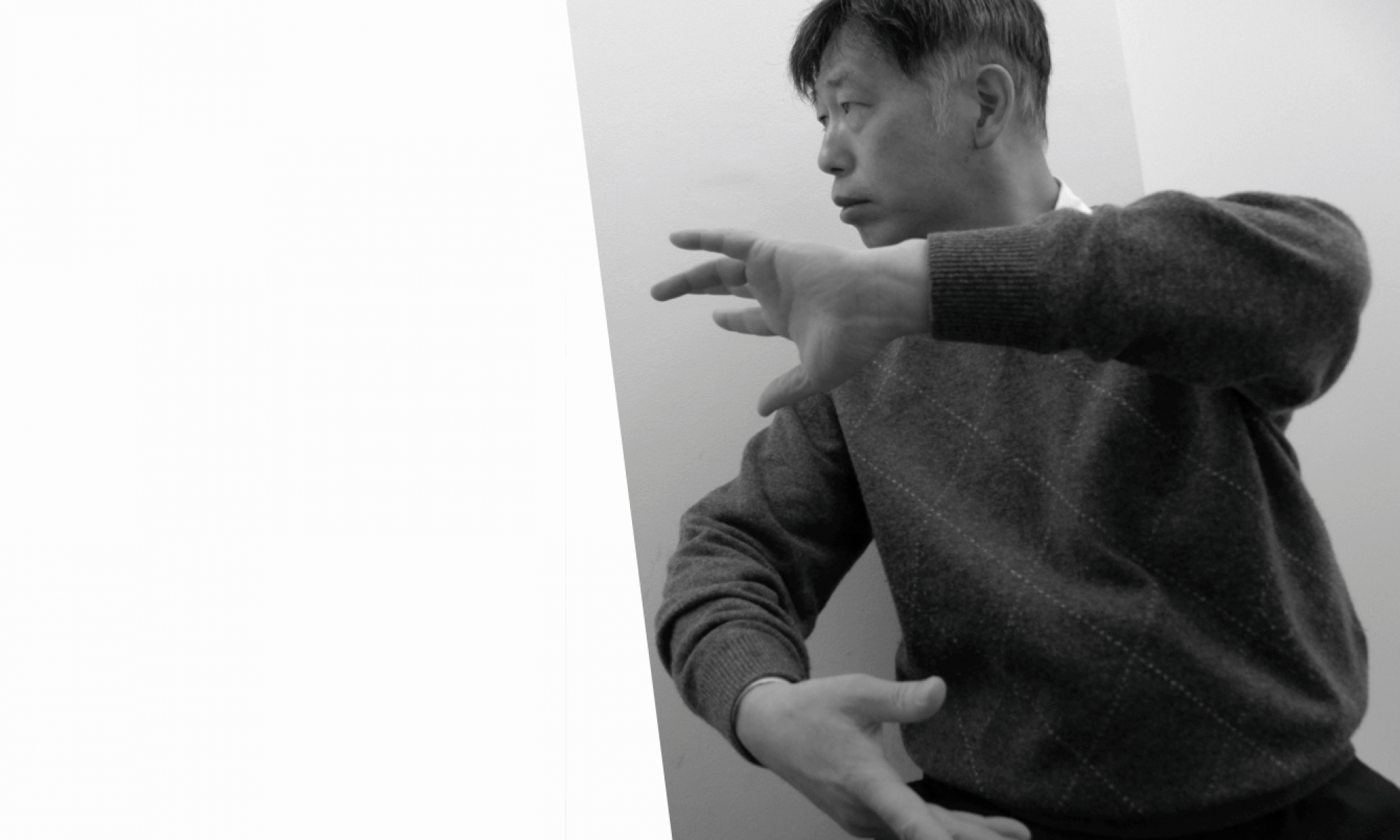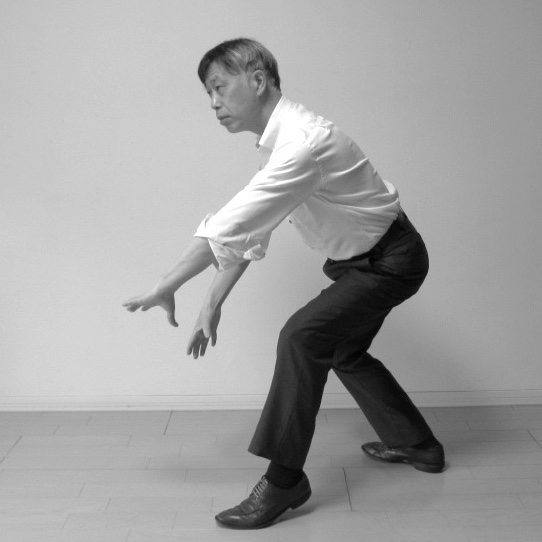
“Brush Knee and Twist Step (搂膝拗步)” is useful in street combat.
It is a technique to go counterattack suddenly while in the situation of defending the opponent continuous attacks.

Taijiquan, Back to the tradition
There are no martial arts without Jin (勁). What is a traditional Neijin (内勁)?

“Brush Knee and Twist Step (搂膝拗步)” is useful in street combat.
It is a technique to go counterattack suddenly while in the situation of defending the opponent continuous attacks.

“Golden Rooster Stands on One Leg (金鶏独立)” attacks the lower body with the foot at the same time of attacking the opponent face with the same sided hand.
Although I used the word of “same time”, there is a time lag. The hand is the first attacking that draws their intention, and the foot attacking is following, but it is the main.

The single whip basically attacks on the face. But, a “Low single whip (単鞭下勢)” is a technique to hit the palm like a whip, aiming at the groin.
Let’s explain the usage. You are taking a left leading stance (See Photo 1 below).
The opponent strikes the right fist to your face in the order of the right shoulder and the right leg forward. With deflecting their right hand with your right hand, you are stepping to the left side (See Photo 2 below).

[See Photo1]
In Chen-style Taijiquan, it is called “Six Sealing Four Closing (六封四閉)”.
As a result of the battle by hand tangling techniques, open the both arms of the opponent and enter into inside the guard, paste the both open-palms on the chest. It is the moment when a chill runs down their spine.

“Strike to ears with both fists (双峰貫耳)” is a technique of kicking in the crotch and then, striking to the both ears with both fists.
Let me explain how to use this technique. An expected situation is that the enemy tries to make a tackle on you to hold your waist. “Strike To Ears With Both Fists” の続きを読む

“Single whip (単鞭)” is a technique to let a hand fly like a whip, and smash on the opponent’s face with the open-palm.
It is named because that the left hand is controlled with the right hand just like one long single whip. “Single Whip” の続きを読む

“White crane spreads its wings (白鶴亮翅)” is a technique to open the opponent’s body and enter into an attackable position.
The posture succeeded in entering the attackable position (see photo) may be resembled to the gesture that the white crane spreads its wings. The name comes from this. What an elegant naming for a martial art. “White Crane Spreads Its Wings” の続きを読む

Beginning (起勢) is the first movement when playing the simplified 24-form taijiquan (太極拳). First of all I should say that it is not a fighting technique.
Placing internal energy (気) in the body center, letting the back free, making the mind (意) to penetrate to the head top, which help you to become united with the surrounding space. Stretch your fingertips downwards and inject internal energy (気) into your fingertips. See the top photo. “Taijiquan Beginning” の続きを読む

“Needle to sea bottom (海底針)” is a reversal technique when the wrist is gripped by the enemy.
In Chinese martial arts, a joint lock technique is called Qinna (擒拿).
Let me explain the technique of “Needle to sea bottom” of Taijiquan (太極拳).
The enemy grabs your right wrist with the right hand. “Needle To Sea Bottom” の続きを読む

“Fair Lady Shuttles (玉女穿梭)” is a technique to be powerfully effective when it comes to a battle with multiple enemies.
Let me think about the origin of the name, “Fair Lady” resembles the gesture of the high society women by the posture before sensing the attack of the enemies from the left and right to deal with. See the top photo. “Fair Lady Shuttles” の続きを読む